
 Last week was a challenge.
Last week was a challenge.
Of all the things I didn’t want to bring home from the Banff Christmas Market, the common cold was near the top of the list. I don’t get sick often, but when I do, it’s usually a full beating of a man cold. This one wasn’t fun, but it was better than most, and I had a few days to lay low at home before the third market. I felt a lot better on Friday but was still symptomatic, so I revived one of my tiger masks to prevent spreading the fun.
When I could tell people couldn’t hear me well and I had to speak up, I apologized and explained why I was wearing the mask. Some said they appreciated my not wanting to spread my cold. Others thought I was wearing it as part of the animal theme. I got many compliments, and somebody even asked if I was selling them.
I had ordered some replacement metal prints that sold the first weekend, and they were supposed to be here by Friday. On Tuesday, after Purolator said the package had arrived at the sorting facility in Calgary, they revised their tracking to say the package was delayed due to weather.
Vendors and attendees from Calgary said the roads were great, and I could find no evidence of a weather issue on that route, especially not one that lasted three days.
Many people are experiencing delays as the couriers deal with overflow and increased demand. The Canada Post strike has screwed up shipping all over the country at the busiest time of year. But when people are already pissed off at a situation, don’t lie to them. It’s insulting.
The Purolator package arrived at my door Sunday afternoon. I’m glad the weather finally cleared up.
Mike at Pacific Music & Art cobbled a rush order of Highland Cow magnets and calendars so I would have them for the last two weekends. UPS said they’d be here by Friday but that morning, they revised their tracking to, you guessed it, Monday.
I had ordered enough replacement stock for two market weekends. I now need to move them in one. As of Saturday morning, I had three calendars left, and those went quickly.
Despite a slow start on Friday, it was an excellent weekend for sales. As I’ve now sold out of a few prints, I’m retiring some to make room for new paintings next year. Others I’ll wait to restock until just before the Calgary Expo. These are some of the immediate retirees but more are coming.
 I never know which paintings will become popular and which ones won’t resonate with people. Or sometimes people will like an image, just not as a print to hang on their wall. The only way to find out is to create the painting, release it, and see what happens. When I retire an image in print, it means it will no longer be available on my site or at markets.
I never know which paintings will become popular and which ones won’t resonate with people. Or sometimes people will like an image, just not as a print to hang on their wall. The only way to find out is to create the painting, release it, and see what happens. When I retire an image in print, it means it will no longer be available on my site or at markets.
 Sometimes, a print will become popular for a particular venue, like the Calgary Zoo. My Rockhopper Penguin does very well for them because they have a penguin habitat their visitors enjoy. But that print has never done well for me at markets or the Calgary Expo.
Sometimes, a print will become popular for a particular venue, like the Calgary Zoo. My Rockhopper Penguin does very well for them because they have a penguin habitat their visitors enjoy. But that print has never done well for me at markets or the Calgary Expo.
 My Sasquatch painting is a popular licensed image for Pacific Music & Art, as they have customers all over the Pacific Northwest, BC, and Alaska. Harlequin Nature Graphics sells the image on T-shirts and has been a good seller for them for years. And while I have sold several prints of that image, it’s never been a bestseller for me.
My Sasquatch painting is a popular licensed image for Pacific Music & Art, as they have customers all over the Pacific Northwest, BC, and Alaska. Harlequin Nature Graphics sells the image on T-shirts and has been a good seller for them for years. And while I have sold several prints of that image, it’s never been a bestseller for me.

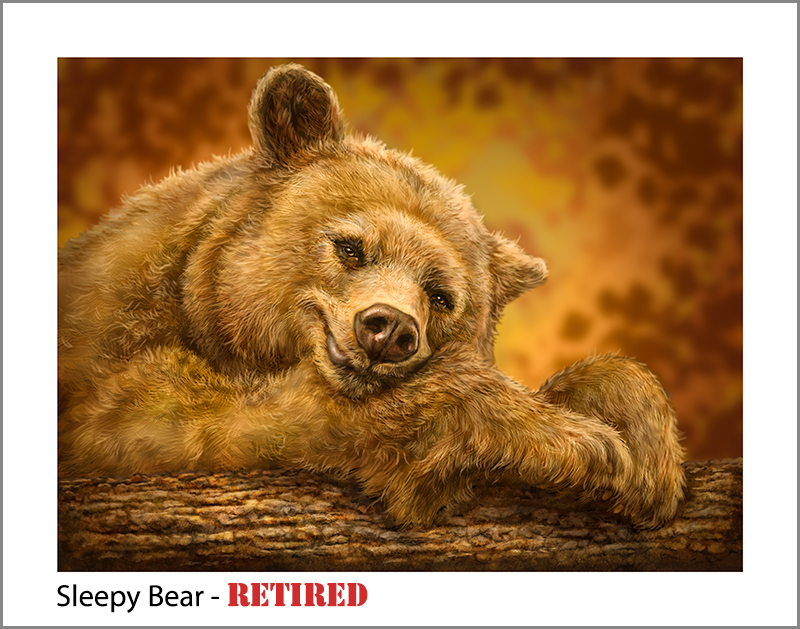 Art Ink Print in Victoria has been professionally printing my work for years, but they’re a small business, too. They require a minimum order for each image, or it isn’t worth their time. If I continued to stock several different prints that don’t sell well for me, it would cost me more than I would make to keep them in stock to have them on hand for the one or two that might sell at each market or online.
Art Ink Print in Victoria has been professionally printing my work for years, but they’re a small business, too. They require a minimum order for each image, or it isn’t worth their time. If I continued to stock several different prints that don’t sell well for me, it would cost me more than I would make to keep them in stock to have them on hand for the one or two that might sell at each market or online.
 Even when I no longer sell a print, my licensing clients may still offer the image on their products, and my wholesale customers may still order prints from me to sell to their customers. I just have to require the same minimum orders from them that my printer requires from me.
Even when I no longer sell a print, my licensing clients may still offer the image on their products, and my wholesale customers may still order prints from me to sell to their customers. I just have to require the same minimum orders from them that my printer requires from me.
It’s tough to retire prints. I’ve spent many hours on each painting and get attached to each one. This little rat has always been one of my favourites. But when your art pays your bills, you’ve got to make tough choices.
 My next-door neighbours, Noble Coin Rings out of Innisfail, are fun to work with. I was beside them last year for my two weekends at this show, and the organizers put us together for four weeks at this one. They also do the Calgary Expo.
My next-door neighbours, Noble Coin Rings out of Innisfail, are fun to work with. I was beside them last year for my two weekends at this show, and the organizers put us together for four weeks at this one. They also do the Calgary Expo.
We get along well; there are plenty of inside jokes, inappropriate comments and smartass exchanges. We’ve each requested the same spots for next year and the same neighbours. It would be hilariously perfect if we found ourselves next to each other at the Calgary Expo in the spring, but it’s unlikely at such a big show.
One of the things that has affected public perception of my work lately is how much AI has suddenly become a part of our lives, especially for creative professionals. Once these markets are over, I will focus on finishing two paintings before the end of the year. After that, however, I’m planning a video to talk about artists having to adapt to this new technology.
The first time somebody asked if my work was AI was at last year’s Banff Christmas Market, and it surprised me, though it probably shouldn’t have. For years, one of my lines while introducing my work has been, “No photos are part of my work. I only use them for reference.”
In the early days of my career, many assumed that if you were drawing or painting on a computer, you must be manipulating photos and using filter effects. I used to get my hackles up, bite back the bile, and explain that I don’t do that. Each painting begins on a blank digital canvas and involves many hours of brushwork.
Because enough people are asking at this market, I now must add, “No photos or AI are part of my work.”
A great part of the personality of the Banff Christmas Market is the atmosphere they’ve created. It’s like a little Christmas village, with decorations everywhere. Families can book photos with Santa; there’s live music in the courtyard, woodburning fires with blankets, plenty of seating, games, and entertainment. They’ve also set up several creative photo opportunities. And if all that wasn’t enough, trains fly by several times a day, gently shaking the building.
I’m not big on Christmas, but this atmosphere softens even my crusty Scrooge exterior.
Which brings me to the Banff Christmas Market Grinch.
This character roams the show in great makeup and costume, posing for photos. Whoever plays this role owns it and is doing a great job. He’s fun, delightfully nasty, and has a quick wit.
On Saturday, he was going from booth to booth in our part of the show, loudly cackling his insults, impossible to ignore. At some point, I had turned my back to my booth while talking with my neighbours, so I missed him walking up and looking at my artwork.
Suddenly, behind me, the Grinch loudly said, “Wow, AI has really come a long way.”
As if poked with a sharp stick, I spun on my heels and snapped, “Hey, these are NOT AI!”
My neighbours began laughing, and I immediately knew I’d been baited and caught. Like any good comedian who realizes he’s pressed the right button, he took it up a notch. He loudly announced to everybody within earshot, “Attention. I need everybody’s attention. I have an announcement. Pat-a-rique (deliberately mispronounced) is not using AI. Because Pat-a-rique is AN ARTISTE!”
The rest was a blur. I just stood there, blushing, laughing, and taking it. After a few weeks of too many people asking if my work is AI and calmly explaining through clenched teeth that it’s not, he had struck a very raw nerve.
You’re a mean one, Mr. Grinch. But damn, it was funny.
Shonna finally got to visit the market on Sunday. She approached my booth and asked, “Are these AI?”
It’s a good thing she’s cute.
 There’s one more weekend to go. Though I have sold out of some prints, I still have a wide selection of metal, canvas and poster prints, magnets, postcard sets and coasters. And my calendars and Highland Cow magnets have finally arrived. I’m feeling much better and look forward to seeing more familiar faces and meeting new ones.
There’s one more weekend to go. Though I have sold out of some prints, I still have a wide selection of metal, canvas and poster prints, magnets, postcard sets and coasters. And my calendars and Highland Cow magnets have finally arrived. I’m feeling much better and look forward to seeing more familiar faces and meeting new ones.
And if you hurry, you might just see a whimsical wildlife painter (it’s NOT AI!) revealing the tiniest bit of Christmas spirit.
Bah, Ho, Ho, Ho,
Patrick


 Because I haven’t released a new painting in a while, I did not want to publish yet another post promising something new down the road. So, here’s a new piece: a weary-looking grizzly bear in the snow. I’m calling it Bedtime.
Because I haven’t released a new painting in a while, I did not want to publish yet another post promising something new down the road. So, here’s a new piece: a weary-looking grizzly bear in the snow. I’m calling it Bedtime.
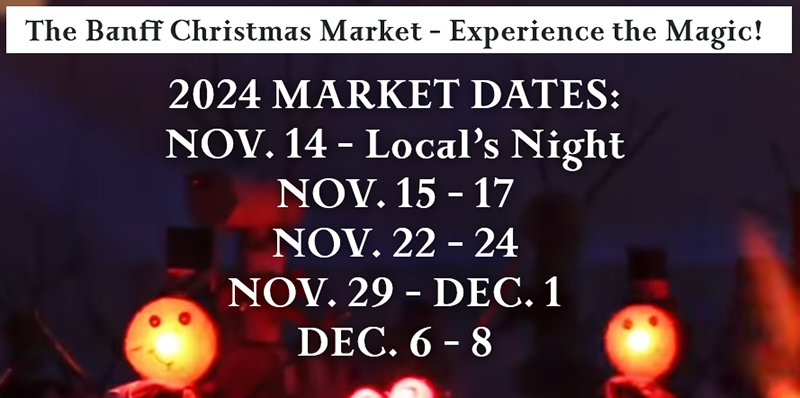


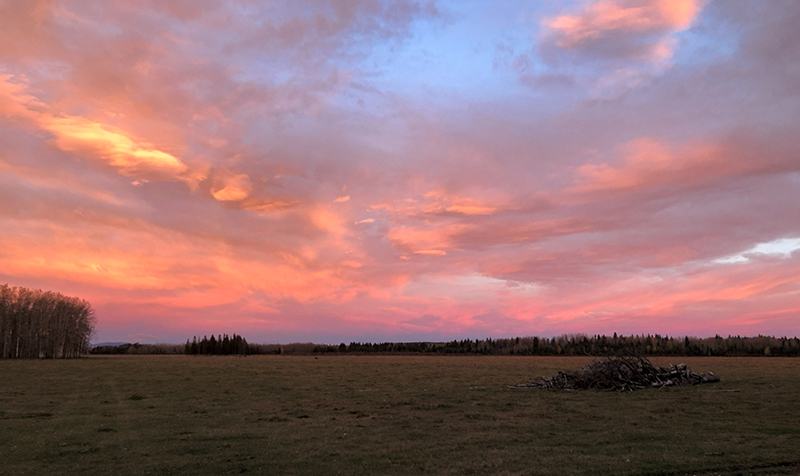 With a lot to do and feeling like I was way behind, a cabin trip seemed like a low priority. But it’s an inexpensive getaway, a relatively short drive, and I needed a break.
With a lot to do and feeling like I was way behind, a cabin trip seemed like a low priority. But it’s an inexpensive getaway, a relatively short drive, and I needed a break. Not the most exciting critter encounters, but I got some good squirrel pics. This amusing little chatterbox might very well inspire a painting.
Not the most exciting critter encounters, but I got some good squirrel pics. This amusing little chatterbox might very well inspire a painting. I took photos of wind-broken tree stumps where I might place an owl or eagle. A natural doorway created by curved and fallen branches has potential. You never know what might spark a new piece.
I took photos of wind-broken tree stumps where I might place an owl or eagle. A natural doorway created by curved and fallen branches has potential. You never know what might spark a new piece.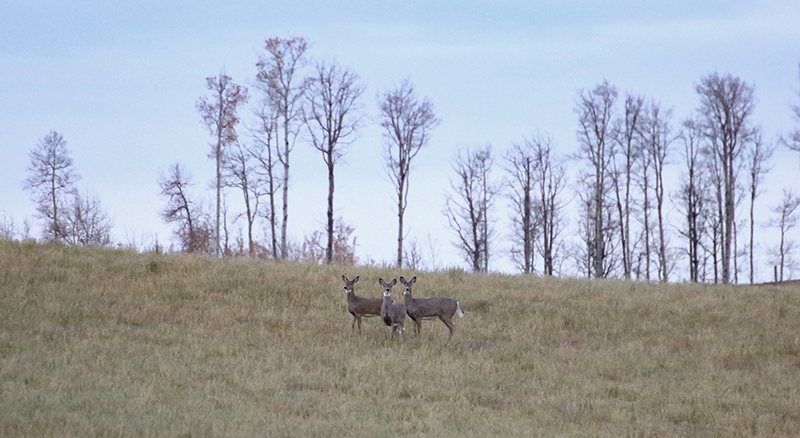 Though we had visited with them earlier, the owners texted us Sunday evening that the Atlas comet was barely visible over the pasture. It had been brighter and more evident days earlier, but this was the last chance to see it. We walked out in the dark, not wanting to use flashlights that might ruin our night vision and found the faint anomaly among the sea of stars. Darrel took this shot on his newer phone. I couldn’t get a good capture with mine. You can just see the comet tail on the left.
Though we had visited with them earlier, the owners texted us Sunday evening that the Atlas comet was barely visible over the pasture. It had been brighter and more evident days earlier, but this was the last chance to see it. We walked out in the dark, not wanting to use flashlights that might ruin our night vision and found the faint anomaly among the sea of stars. Darrel took this shot on his newer phone. I couldn’t get a good capture with mine. You can just see the comet tail on the left. We had nice fall weather for most of our time there, but it got cold and windy Sunday night and Monday. A snowstorm hit Calgary and Canmore, and given the road reports and Shonna’s texts, I was thrilled I didn’t have to drive back until Tuesday.
We had nice fall weather for most of our time there, but it got cold and windy Sunday night and Monday. A snowstorm hit Calgary and Canmore, and given the road reports and Shonna’s texts, I was thrilled I didn’t have to drive back until Tuesday.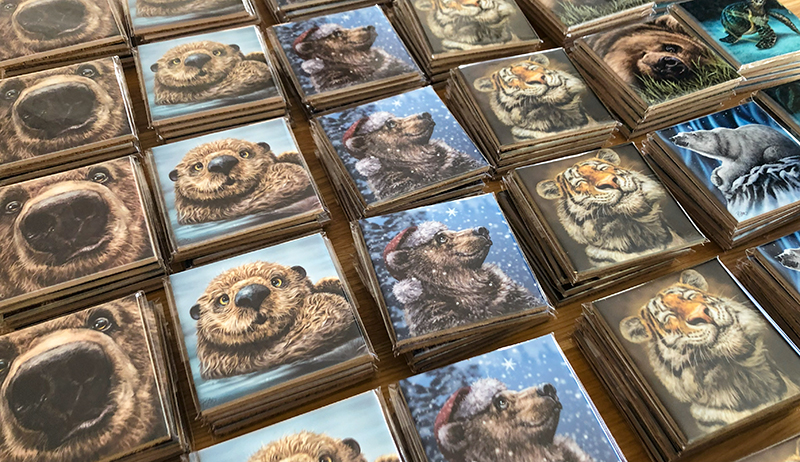 My order from Pacific Music & Art was waiting for me when I got home, and it contained
My order from Pacific Music & Art was waiting for me when I got home, and it contained  On the one hand, it shows that this side of my business continues to grow. As it’s the work I enjoy most and has the best chance of ensuring my financial future, I’m grateful. But it’s a significant investment of time and money that comes with no small amount of anxiety.
On the one hand, it shows that this side of my business continues to grow. As it’s the work I enjoy most and has the best chance of ensuring my financial future, I’m grateful. But it’s a significant investment of time and money that comes with no small amount of anxiety.
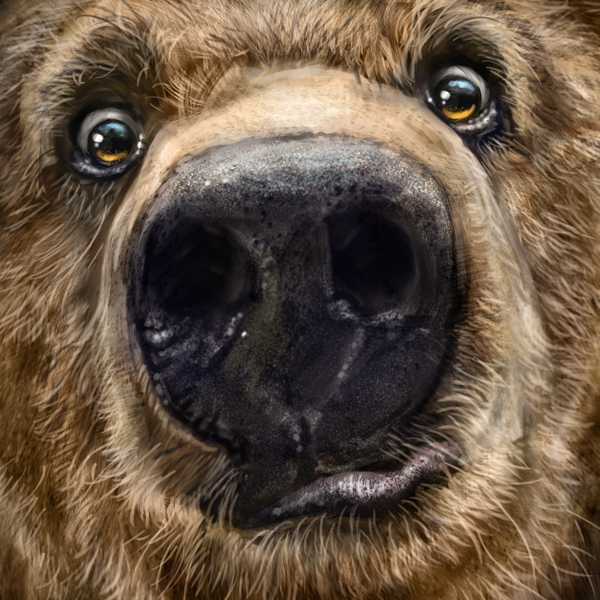
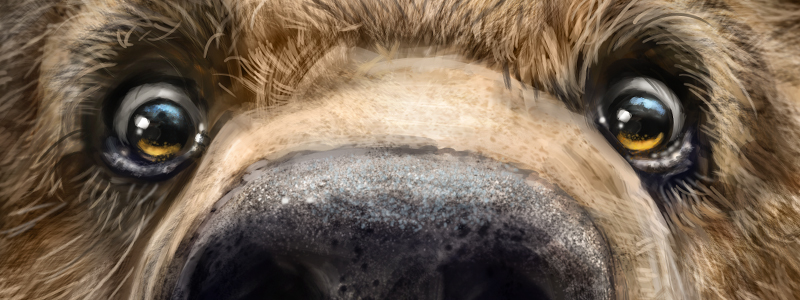 With a website and
With a website and 

 If your art becomes popular enough that people like it, share it and buy it, somebody will steal it. Some creatives stamp ugly watermarks across every image they post to try to combat this, but what’s the point if you need to go that far?
If your art becomes popular enough that people like it, share it and buy it, somebody will steal it. Some creatives stamp ugly watermarks across every image they post to try to combat this, but what’s the point if you need to go that far?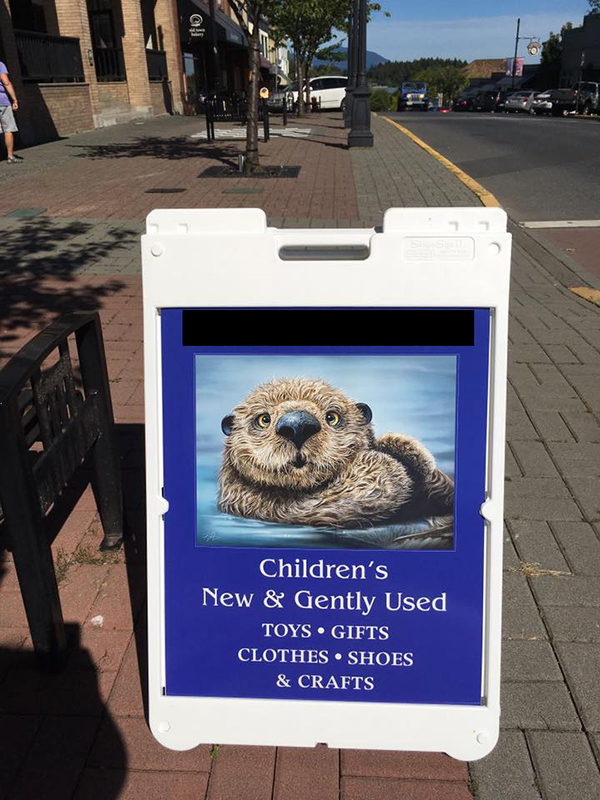 Several years ago, my friend Kathryn alerted me to a woman on Vancouver Island using my Otter painting as the logo for her business. It was on her business cards, a sidewalk sandwich board, window decals and advertising. When I called the owner on it, she said she Googled ‘royalty-free images’ and my otter came up. I asked if Mickey Mouse had come up in that search, would she think Disney would allow her to use him as her logo? My signature is still on the image on that sign! She angrily told me I was being unreasonable and said if I had been nicer, we could have come to an arrangement.
Several years ago, my friend Kathryn alerted me to a woman on Vancouver Island using my Otter painting as the logo for her business. It was on her business cards, a sidewalk sandwich board, window decals and advertising. When I called the owner on it, she said she Googled ‘royalty-free images’ and my otter came up. I asked if Mickey Mouse had come up in that search, would she think Disney would allow her to use him as her logo? My signature is still on the image on that sign! She angrily told me I was being unreasonable and said if I had been nicer, we could have come to an arrangement. Another company in the same area had my Moose and Grizzly Bear paintings on their chocolate-covered candy labels sold in a local store. The company’s owner in Eastern Canada said they’d hired a graphic designer to make the labels. He just stole my work online and passed it off as his own.
Another company in the same area had my Moose and Grizzly Bear paintings on their chocolate-covered candy labels sold in a local store. The company’s owner in Eastern Canada said they’d hired a graphic designer to make the labels. He just stole my work online and passed it off as his own. From what I’ve found, she stole my Coyote, Grizzly, Black Bear, Moose, Squirrel, Peanuts and Smiling Tiger paintings, but likely more than that. While the first five are no longer bestsellers, and a couple are even retired, my Smiling Tiger and Peanuts paintings are two of my most popular, bestselling and frequently licensed images.
From what I’ve found, she stole my Coyote, Grizzly, Black Bear, Moose, Squirrel, Peanuts and Smiling Tiger paintings, but likely more than that. While the first five are no longer bestsellers, and a couple are even retired, my Smiling Tiger and Peanuts paintings are two of my most popular, bestselling and frequently licensed images.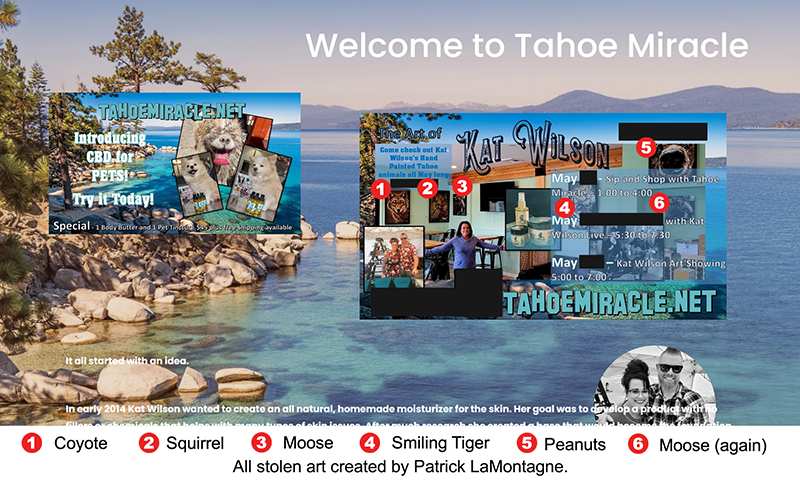
 After a whole career dealing with this kind of thing, I am firm-footed in ‘fool me twice’ territory. Her reply almost stopped me from writing this post, but she’s standing proudly in that photo with six large canvases of an art style I’ve spent years developing. And 24 hours after her apology, my work is still visible on her social media with mentions of her amazing paintings. Very sincere.
After a whole career dealing with this kind of thing, I am firm-footed in ‘fool me twice’ territory. Her reply almost stopped me from writing this post, but she’s standing proudly in that photo with six large canvases of an art style I’ve spent years developing. And 24 hours after her apology, my work is still visible on her social media with mentions of her amazing paintings. Very sincere.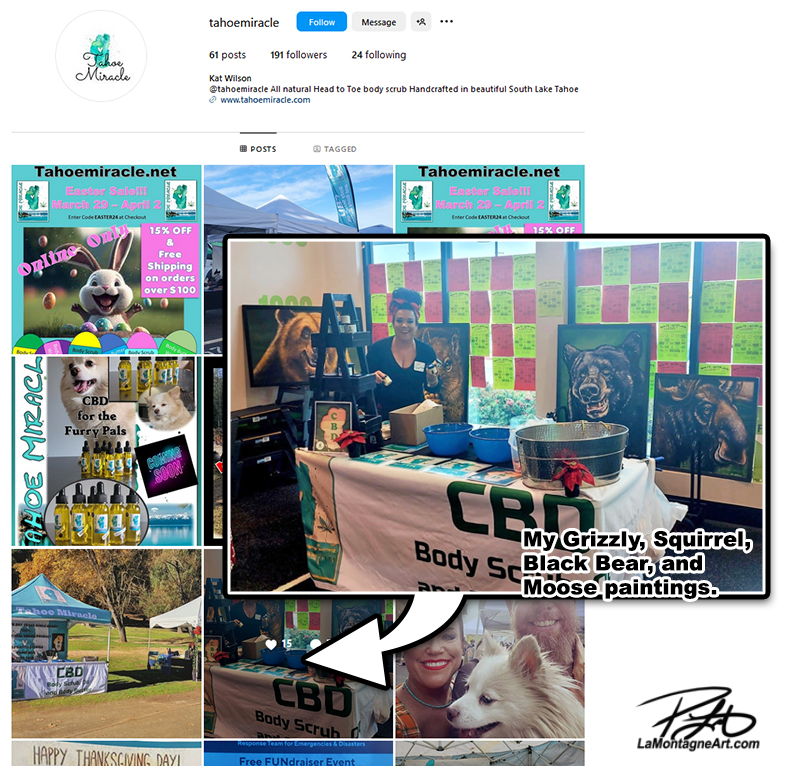

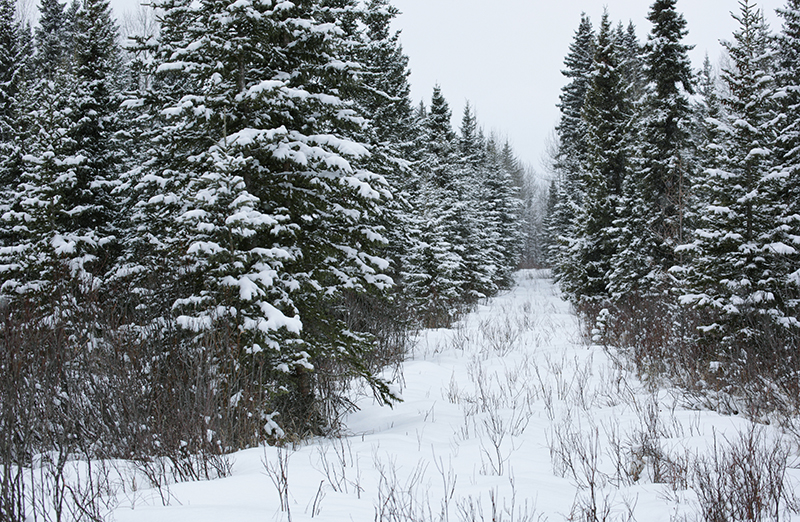 Most years, I’d rather let my birthday go unnoticed, and thankfully, I married someone who feels the same way about hers. If someone mentioned having a birthday ‘party’ for me, my first thought would be, “What the hell did I ever do to you?”
Most years, I’d rather let my birthday go unnoticed, and thankfully, I married someone who feels the same way about hers. If someone mentioned having a birthday ‘party’ for me, my first thought would be, “What the hell did I ever do to you?”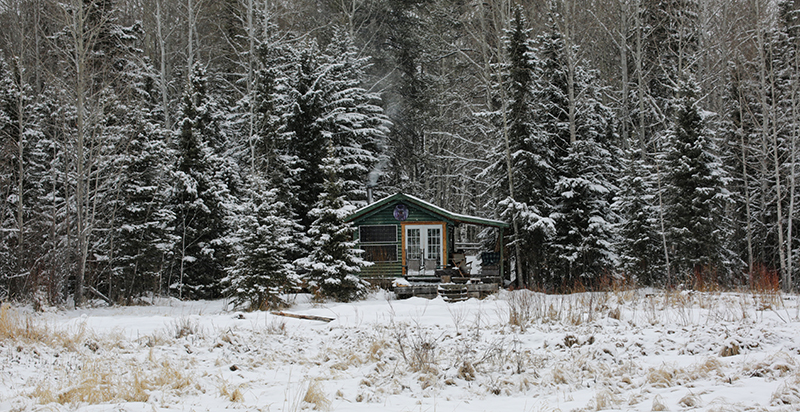 But on the northern border of that same property, nestled beside secluded wetlands, there is another cabin. It’s one room, one bed, solar power for lights, an outhouse, no water and no noise. It’s at the end of a road, behind a gate on private property.
But on the northern border of that same property, nestled beside secluded wetlands, there is another cabin. It’s one room, one bed, solar power for lights, an outhouse, no water and no noise. It’s at the end of a road, behind a gate on private property.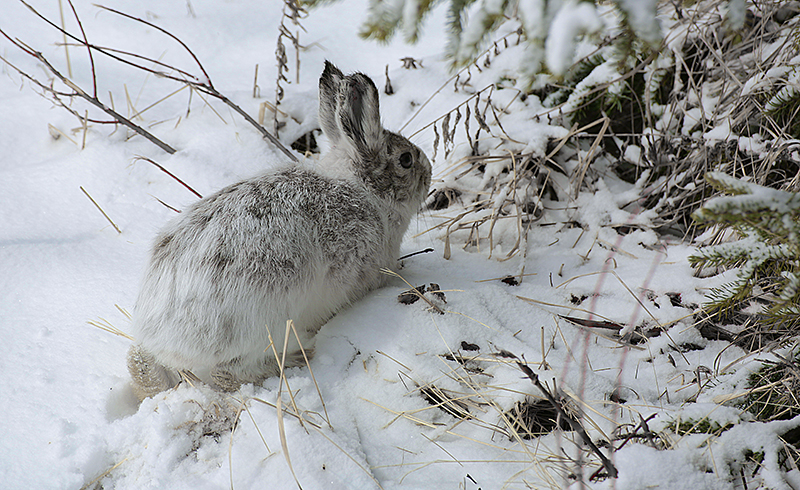 While shovelling snow, I scared a snowshoe hare out from under the deck, and I took that as a good sign. I wanted to see wildlife, even though this critter did not want to see me.
While shovelling snow, I scared a snowshoe hare out from under the deck, and I took that as a good sign. I wanted to see wildlife, even though this critter did not want to see me.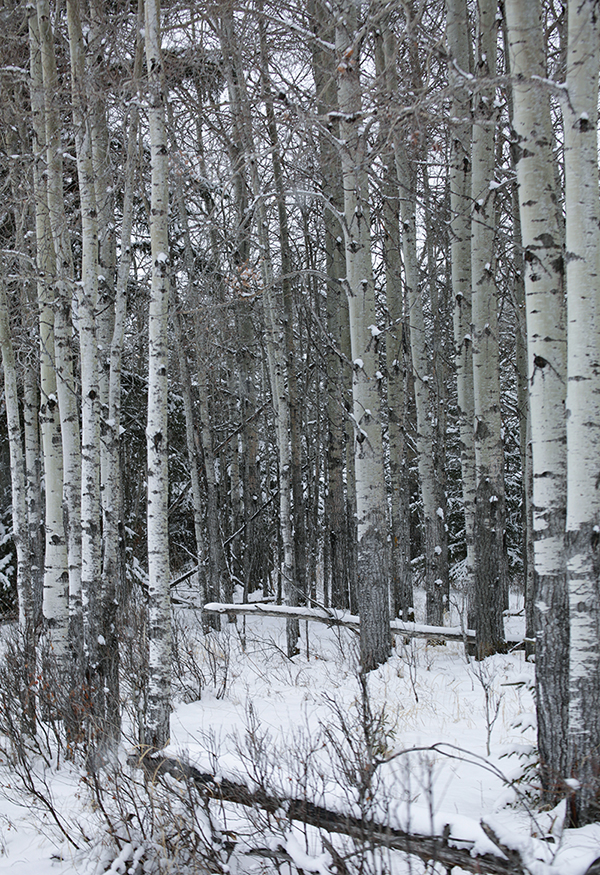 The property owners have become friends over the years, and I like to visit them. While on my daily wanders, I walked up to their place a couple of times, a 5-6 km round trip from where I was staying, as I had no interest in taking the shortest route.
The property owners have become friends over the years, and I like to visit them. While on my daily wanders, I walked up to their place a couple of times, a 5-6 km round trip from where I was staying, as I had no interest in taking the shortest route.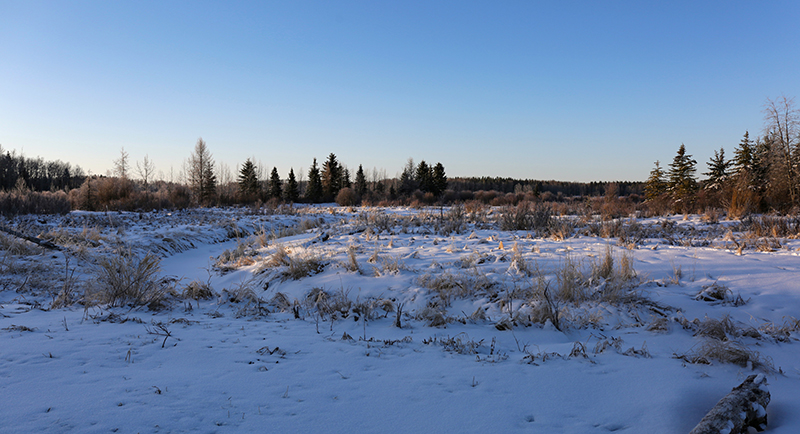 Free to roam more than 300 acres of pasture, wetlands, and forest, I walked close to 20km over 72 hours in snow and sunshine. It was peaceful and very pretty.
Free to roam more than 300 acres of pasture, wetlands, and forest, I walked close to 20km over 72 hours in snow and sunshine. It was peaceful and very pretty. In the new fallen snow, fresh moose, coyote, deer and rabbit tracks were all over the place, many of them just hours old. I heard the coyotes at night and in the morning, and that was nice. It’s one of my favourite sounds. I listened to an owl calling two nights in a row. But all I saw were little birds flying here and there, a few ravens, a couple of geese, and that scared little bunny when I first arrived.
In the new fallen snow, fresh moose, coyote, deer and rabbit tracks were all over the place, many of them just hours old. I heard the coyotes at night and in the morning, and that was nice. It’s one of my favourite sounds. I listened to an owl calling two nights in a row. But all I saw were little birds flying here and there, a few ravens, a couple of geese, and that scared little bunny when I first arrived. I know professional photographers who spend great amounts of time, energy and money to get to remote places, park themselves in a blind, right next to a game trail for hours and days on end, and often come home with little or nothing to show for it.
I know professional photographers who spend great amounts of time, energy and money to get to remote places, park themselves in a blind, right next to a game trail for hours and days on end, and often come home with little or nothing to show for it. I spent my birthday by myself, without anyone telling me how I should be celebrating it. I got up early, as I prefer, without walking on eggshells for fear of waking anybody up, which is often the case on cabin visits with friends. I played guitar and sang, fumbled with chord changes, learning songs I didn’t know, without intruding on anyone else’s peace and quiet.
I spent my birthday by myself, without anyone telling me how I should be celebrating it. I got up early, as I prefer, without walking on eggshells for fear of waking anybody up, which is often the case on cabin visits with friends. I played guitar and sang, fumbled with chord changes, learning songs I didn’t know, without intruding on anyone else’s peace and quiet.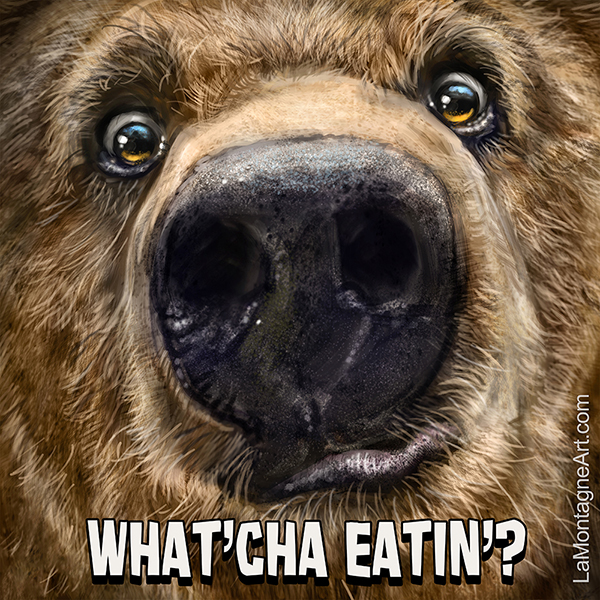
 If you’re like me, bombarded daily with negative news and polarized opinions, this noisy world can become overwhelming. It bothers me, and I often wonder, “Why are people so mean to each other?”
If you’re like me, bombarded daily with negative news and polarized opinions, this noisy world can become overwhelming. It bothers me, and I often wonder, “Why are people so mean to each other?” It’s a moment of connection between my funny-looking animals and people I’ve never met. I love watching it happen, and it is a reminder that something I created made somebody else’s day a little better, if only for a moment. In a world that often seems nasty, with people intent on highlighting our worst qualities, I create art that makes people smile. I often forget that, but when I do remember, I’m grateful for this ability.
It’s a moment of connection between my funny-looking animals and people I’ve never met. I love watching it happen, and it is a reminder that something I created made somebody else’s day a little better, if only for a moment. In a world that often seems nasty, with people intent on highlighting our worst qualities, I create art that makes people smile. I often forget that, but when I do remember, I’m grateful for this ability. If you know me well, all this might sound hypocritical. I struggle with seeing the good in the world, which often puts me in a dark mood. But just like a smoker knows the habit is unhealthy, it’s worth the effort to try to cut back and eventually quit.
If you know me well, all this might sound hypocritical. I struggle with seeing the good in the world, which often puts me in a dark mood. But just like a smoker knows the habit is unhealthy, it’s worth the effort to try to cut back and eventually quit. So, to spread some positive feelings around, I created these Wilder Wishes images you see here, from some of
So, to spread some positive feelings around, I created these Wilder Wishes images you see here, from some of 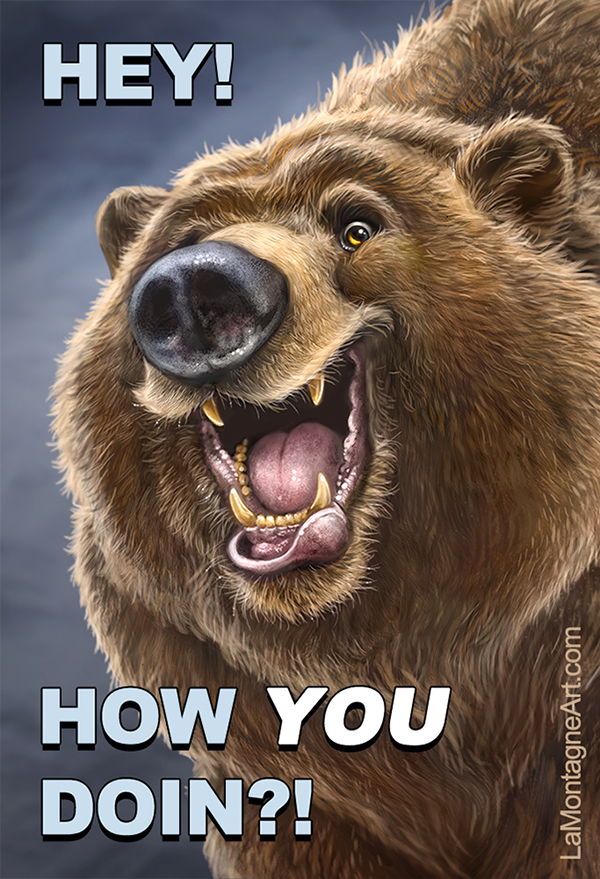 If one of these happy faces makes the day a little brighter, for you or somebody else, then that makes mine better, too. Sometimes, you’ve got to give a smile to get one back.
If one of these happy faces makes the day a little brighter, for you or somebody else, then that makes mine better, too. Sometimes, you’ve got to give a smile to get one back.
 In the late nineties, I worked different jobs at a hotel in Banff for five or six years, from waterslide attendant and manager to front desk agent, night auditor and accounting clerk.
In the late nineties, I worked different jobs at a hotel in Banff for five or six years, from waterslide attendant and manager to front desk agent, night auditor and accounting clerk. I’ve always liked ravens, and I talked a bit about that in my
I’ve always liked ravens, and I talked a bit about that in my 






 On occasion, I focus less on veterans of the wars and more on those who currently serve. And throughout the year, I take every opportunity to draw cartoons intended to shame our political leadership into less talk and more action.
On occasion, I focus less on veterans of the wars and more on those who currently serve. And throughout the year, I take every opportunity to draw cartoons intended to shame our political leadership into less talk and more action. From decades-long procurement problems and endless red tape tying up much-needed equipment replacement to an enlistment shortfall that gets worse each year, the Canadian Armed Forces has its issues. Stains and scandals are public record, and for those, they’re held to account.
From decades-long procurement problems and endless red tape tying up much-needed equipment replacement to an enlistment shortfall that gets worse each year, the Canadian Armed Forces has its issues. Stains and scandals are public record, and for those, they’re held to account. Just this year, the military was tasked with emergency deployments when wildfires threatened several communities. They’ve rendered such assistance in countless natural disasters across Canada over the years. Given our changing climate, Canada will require more of their aid in the future.
Just this year, the military was tasked with emergency deployments when wildfires threatened several communities. They’ve rendered such assistance in countless natural disasters across Canada over the years. Given our changing climate, Canada will require more of their aid in the future. Politicians on all sides talk a good game about supporting our men and women in uniform when it buys them votes, only to slash budgets when they no longer benefit from the optics. The men and women who serve have surrendered their right to openly complain about the government, something the rest of us take for granted.
Politicians on all sides talk a good game about supporting our men and women in uniform when it buys them votes, only to slash budgets when they no longer benefit from the optics. The men and women who serve have surrendered their right to openly complain about the government, something the rest of us take for granted.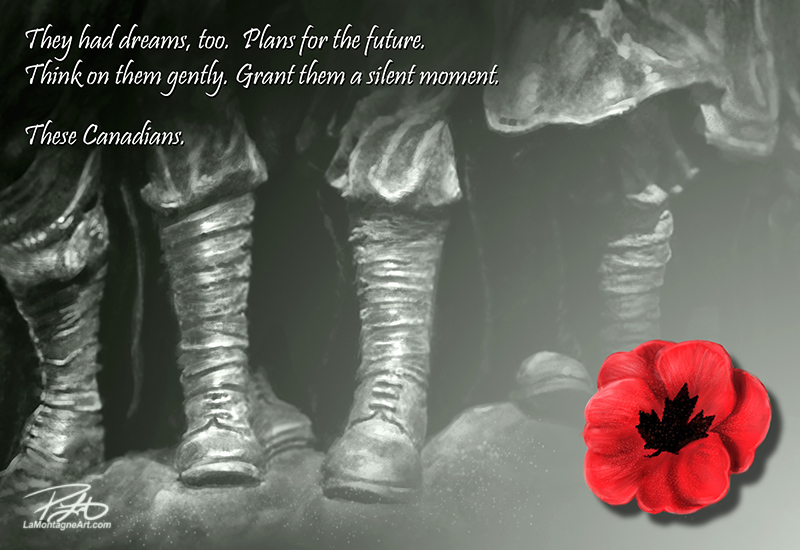 Yes, think of those who have fallen in service of our country. Remember them and their sacrifice, so that history isn’t allowed to repeat.
Yes, think of those who have fallen in service of our country. Remember them and their sacrifice, so that history isn’t allowed to repeat.